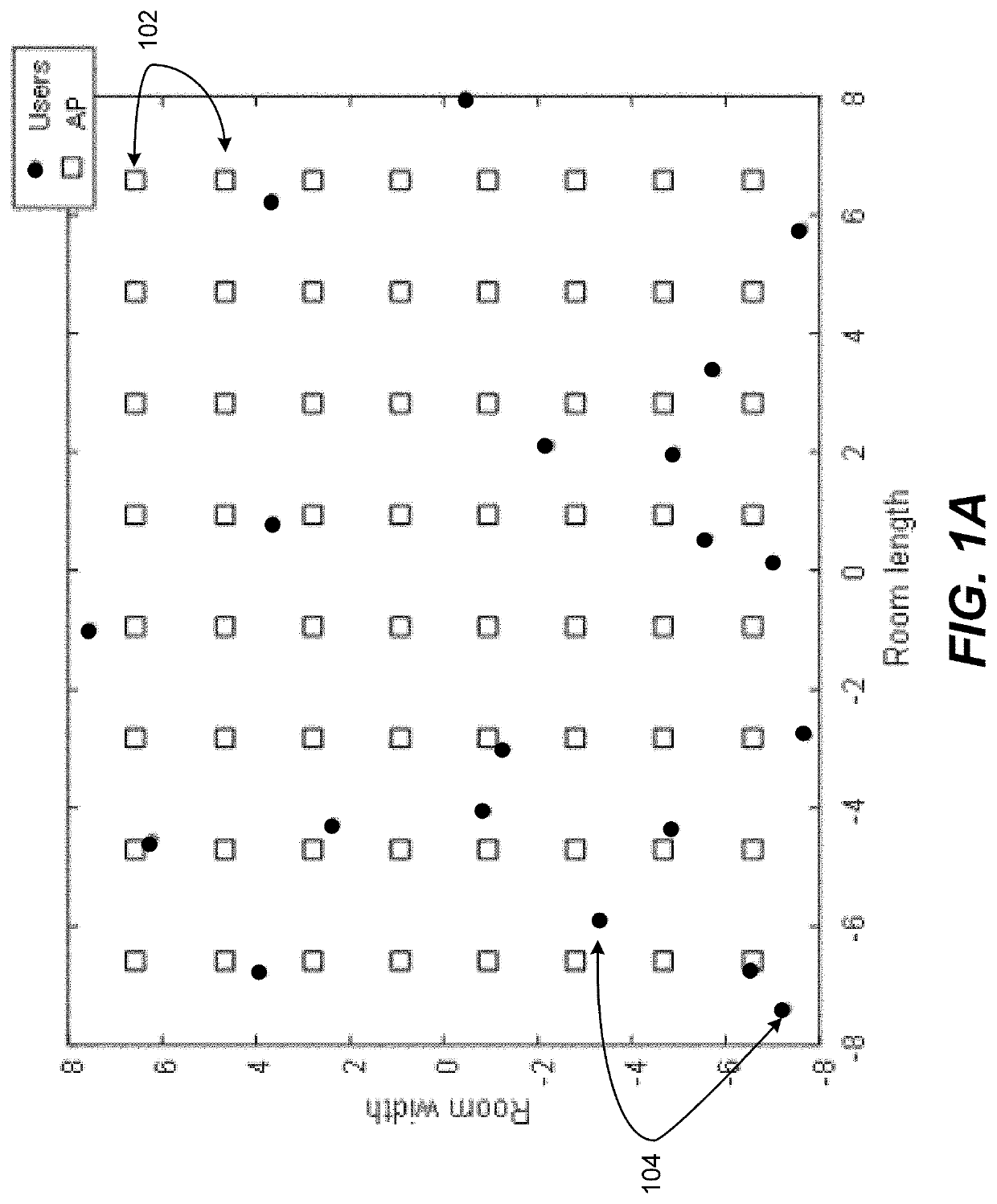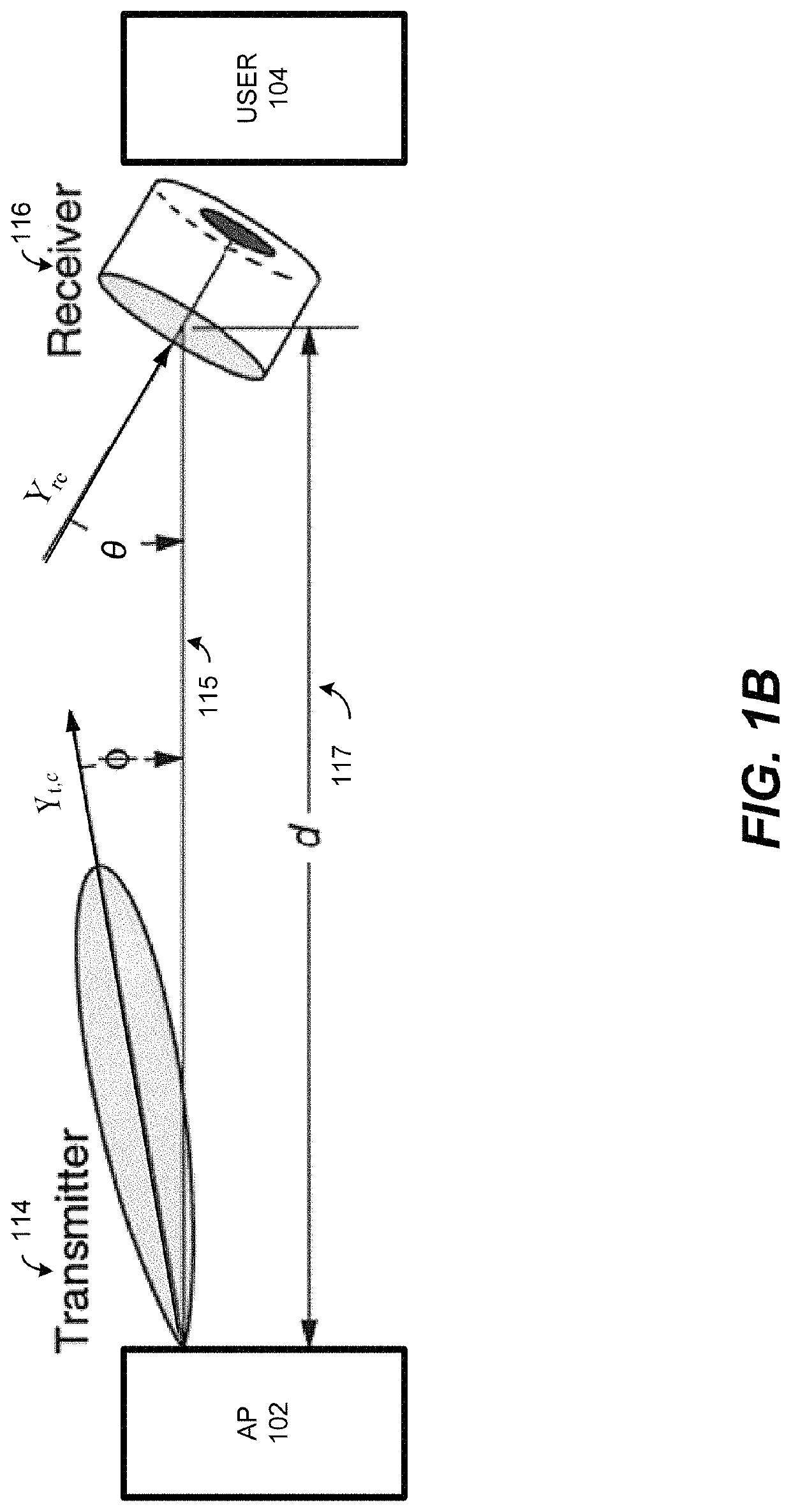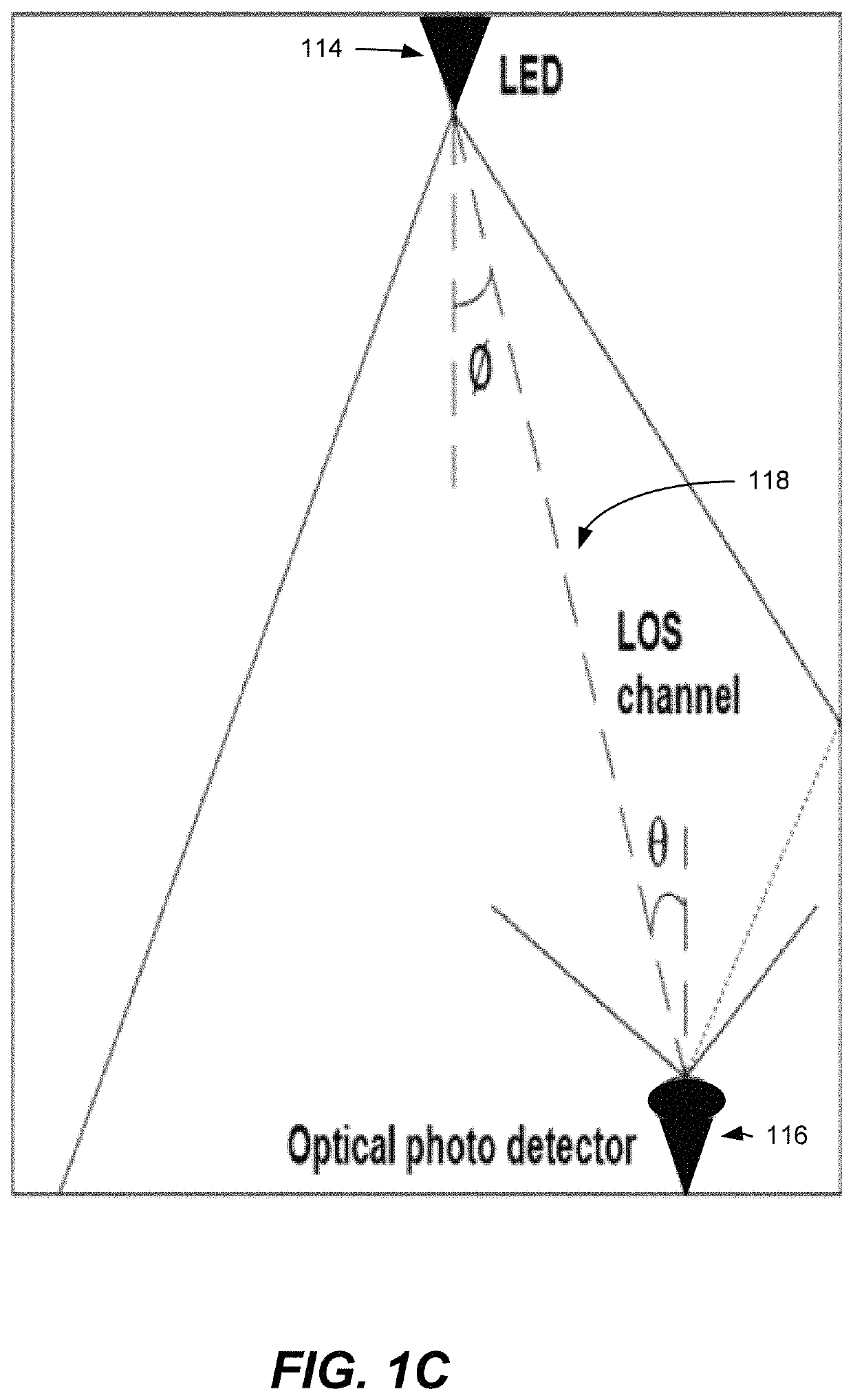Cell clustering and power allocation for energy-efficient VLC networks
a technology of energy-efficient vlc networks and cell clustering, which is applied in the direction of transmission, free-space transmission, close-range type systems, etc., can solve the problems of limited knowledge of the design and optimization issues of energy-efficiency (ee) in vlc networks, the inability to quickly switch on and off light, and the restriction of radio frequency (rf) communications, so as to maximize the signal energy transmitted to each cluster, minimize inter-cell interference, and maximize global energy efficiency
- Summary
- Abstract
- Description
- Claims
- Application Information
AI Technical Summary
Benefits of technology
Problems solved by technology
Method used
Image
Examples
second embodiment
[0137]In the method of the second embodiment, associating an access point (AP) maximizes a cell capacity and minimizes an inter-cell interference in the other cells, such that the global and cell cluster energy efficiencies are maximized.
[0138]In a further feature of the second embodiment, the method includes intensity modulating a light signal applied to a plurality of LEDs included in each access point to transmit information signals to a plurality of users in a cluster associated with the access point, wherein each user includes a photodetector for receiving the light signal.
[0139]In the second embodiment, the method continues by the control system grouping the users into K clusters, wherein K is a predefined number based on the number of APs in the system and wherein and the distances between the K clusters are di,j, i=1, . . . , K, j=i+1, . . . , K; and choosing, by the control system, a cluster center ck and the users for each cluster j so that the sum of the squares of the di...
third embodiment
[0151]The third embodiment describes a non-transitory computer readable medium having instructions stored therein that, when executed by one or more processors, causes the one or more processors to perform a method for joint power allocation and cell formation for energy efficient (EE) visible light communication (VLC) networks, as shown in FIG. 1A-1C, 6.
[0152]The method includes grouping, by a control system 615 including at least a controller 652, a memory 668, a database 664, and the one or more processors 670, a plurality of users 102 into user centric clusters based on their distance to each other; forming, by the control system, cells of a plurality of access points, APs 104, by associating an access point to each user centric cluster, wherein associating is based on maximizing cell capacity within each cell and minimizing inter-cell interference from other cells; allocating power, by the control system, to the APs associated with each user cluster to maximize the energy effic...
PUM
 Login to View More
Login to View More Abstract
Description
Claims
Application Information
 Login to View More
Login to View More - R&D
- Intellectual Property
- Life Sciences
- Materials
- Tech Scout
- Unparalleled Data Quality
- Higher Quality Content
- 60% Fewer Hallucinations
Browse by: Latest US Patents, China's latest patents, Technical Efficacy Thesaurus, Application Domain, Technology Topic, Popular Technical Reports.
© 2025 PatSnap. All rights reserved.Legal|Privacy policy|Modern Slavery Act Transparency Statement|Sitemap|About US| Contact US: help@patsnap.com



